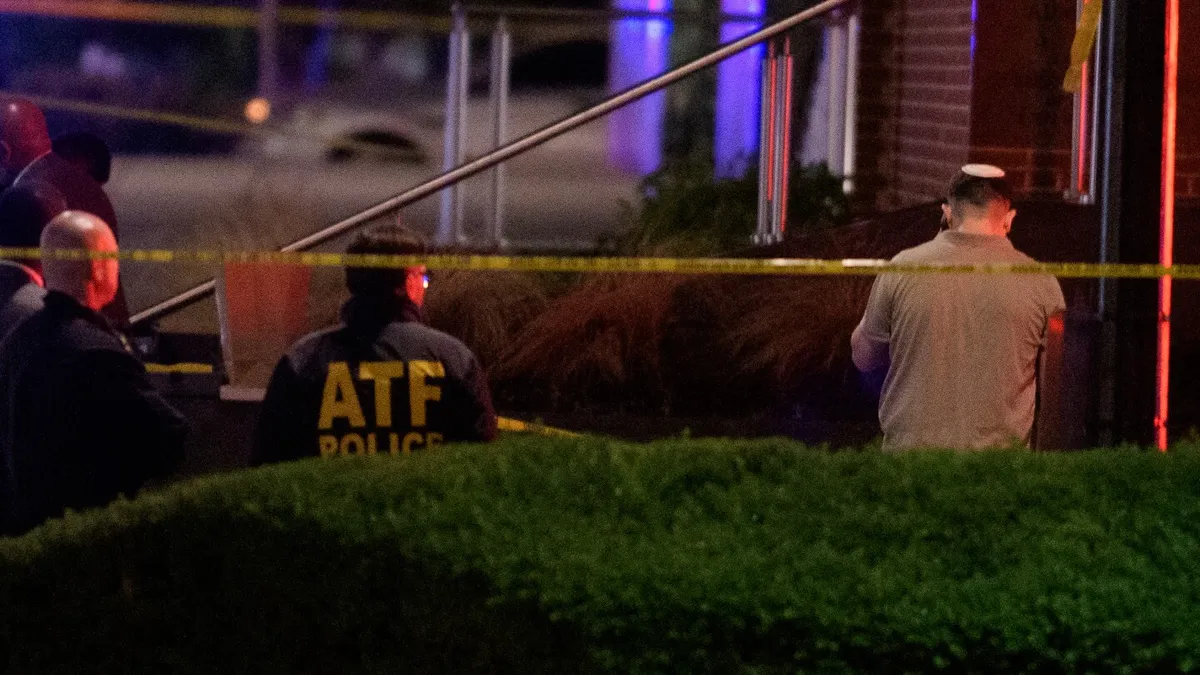
On Wednesday evening, a horrific incident unfolded as two staff members of the Israeli Embassy in Washington were fatally shot while leaving an event at the Capital Jewish Museum. The victims, who were a young couple on the brink of engagement, were attacked as they exited the venue. The assailant reportedly shouted “Free, free Palestine” after his arrest, raising concerns about the rising tide of antisemitism in the United States and abroad, coinciding with Israel's intensified military operations in the Gaza Strip.
The shooting occurred around 9:15 p.m. as the couple left a reception hosted by the American Jewish Committee. According to Metropolitan Police Chief Pamela Smith, the shooter approached a group of four individuals and opened fire. Witnesses reported seeing the suspect pacing outside the museum prior to the incident. After the attack, he entered the museum where he was quickly detained by event security. Upon his arrest, he began chanting “Free, free Palestine,” indicating a politically motivated attack. Officials have reassured the public that there is no ongoing threat to the community.
The suspect has been identified as Elias Rodriguez, a 31-year-old from Chicago. As of now, it remains unclear whether he has legal representation. Following the incident, Rodriguez was being interrogated by the Metropolitan Police Department and the FBI, with plans for prosecution by the U.S. attorney's office in Washington.
The victims of this tragic event were named by Israeli Foreign Minister Gideon Saar as Yaron Lischinsky and Sarah Milgrim. Lischinsky served as a research assistant, while Milgrim was involved in organizing visits and missions to Israel. Former Israeli Ambassador to the U.S. Mike Herzog confirmed that Milgrim was an American citizen employed by the embassy and that Lischinsky was Israeli.
Israeli Prime Minister Benjamin Netanyahu expressed his shock at the “horrific, antisemitic” shooting, stating that it reflects the severe consequences of antisemitism and incitement against Israel. This incident is not an isolated event; Israeli diplomats have faced violence over the years from both state-sponsored actors and Palestinian militant groups amid the long-standing Israeli-Palestinian conflict. The political landscape remains fraught, with Palestinians seeking Gaza and the West Bank for a future state, while peace negotiations have stagnated for years.
Two witnesses, Yoni Kalin and Katie Kalisher, were present in the museum during the shooting. They recounted hearing gunfire and seeing a distressed man enter the building. Kalin reported that bystanders mistakenly approached the suspect, thinking he was a victim, before realizing he was the shooter. When law enforcement arrived, he reportedly pulled out a red keffiyeh and continued shouting, “Free Palestine.” Kalin emphasized the tragedy of the event, noting it was centered on humanitarian aid, and questioned how such violence could occur in the context of efforts to help innocent people in both Gaza and Israel.
This shooting comes at a time of heightened tensions as Israel has launched a new campaign against Hamas in the Gaza Strip. The conflict escalated on October 7, 2023, when Hamas attacked Israel, resulting in the deaths of 1,200 people and the kidnapping of approximately 250 hostages. Since then, Israel's military response has led to significant casualties, including over 53,000 deaths—predominantly women and children—according to local health authorities. The ongoing violence has resulted in widespread displacement, with 90% of Gaza's 2 million residents forced to flee their homes, exacerbating the humanitarian crisis.
Aid organizations have reported severe shortages of food and resources, with many relying on communal kitchens that are nearly empty. The international community continues to express concern over the deteriorating situation in Gaza and its implications for regional stability.